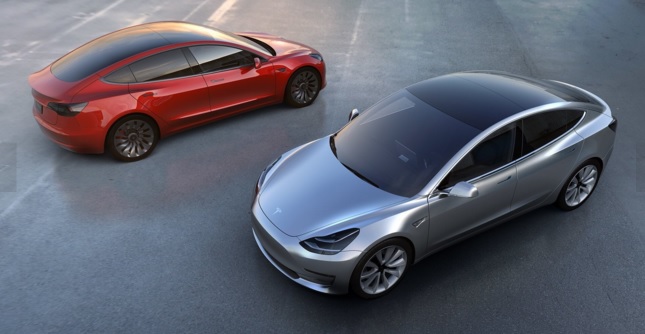EV sales beat overall market: Plug-in vehicles had a strong increase in the first half of the year, while U.S. and global total new vehicle sales stalled out. InsideEVs reports that  148,704 plug-in vehicles were sold in the U.S. during the first half of 2019, compared to 124,256 for first half of 2019. That makes for an increase of 19.67 percent over that same period last year of plug-in hybrid and battery electric vehicles. Through May, there were 840,814 in global plug-in vehicle sales, versus 591,796 for the first five months of 2018 — an increase of 42 percent over that same period last year.
148,704 plug-in vehicles were sold in the U.S. during the first half of 2019, compared to 124,256 for first half of 2019. That makes for an increase of 19.67 percent over that same period last year of plug-in hybrid and battery electric vehicles. Through May, there were 840,814 in global plug-in vehicle sales, versus 591,796 for the first five months of 2018 — an increase of 42 percent over that same period last year.
As for overall new vehicle sales in the U.S., sales were down 2.4 percent halfway through 2019, and is expected to be at 16.9 million by the end of the year; that would be the first time total light-duty new vehicle sales would be below 17 million since 2014. Global new vehicle sales are expected tom come in at 78.7 million units, which is about the same level as 2017 and 2018. The global market had seen a leap in 2016 over the previous years. Sales are still considered to be strong this year; rising auto loans have hurt demand. However, some analysts believe that new vehicle sales will be declining in the U.S., and eventually other markets, as car ownership drops in importance and alternative forms of mobility become more popular.
The Tesla Model 3 continues to dominate U.S. market with 21,225 units sold in June versus No. 2 on the list, the Tesla Model X, which sold 2,725 units during that month. Battery electric vehicles are still dominating the U.S. market. For May 2019 sales, Electric Drive Transportation Association reported there were 21,248 BEVs sold, 7,138 plug-in hybrids, and 283 hydrogen fuel cell vehicles.
Tesla performance up: Tesla’s stock went up 7 percent Tuesday after reporting it produced 87,048 vehicles in the second quarter while delivering 95,200, strong performance that exceeded analyst forecasts. The company manufactured 17,650 Model S and X vehicles and 77,550 Model 3s. Among deliveries, 77,550 were Model 3s while the other 17,650 were Models S and X. Right before the quarterly report, CEO Elon Musk was on Twitter promoting Tesla Direct, a new service that offers some buyers of the Model 3, S and X the option to have their car dropped off at their home or office. It’s gaining a lot of interest and support, and some considering it an element of Tesla focusing on its strengths — quality EVs and a high level of customer service.
Cruise gains SoftBank investment: Cruise Automation, a U.S. self-driving vehicle company majority-owned by General Motors Co. (and operating under the name GM Cruise), announced Friday that a U.S. national security panel approved a $2.25 billion investment in the firm by Japan’s SoftBank Corp. SoftBank has come under increasing U.S. scrutiny over its ties to Chinese firms in the face of an escalating trade and technology war between those two countries. It comes out of SoftBank’s $100 billion Vision Fund investment pool.
VW’s Paris Accord strategy: Volkswagen has released more information on its commitment made earlier this year to commit itself to the goals of the Paris Agreement. The commitment to carbon neutrality comes in three parts: reducing carbon dioxide emitted from vehicles and factories; adopting renewable energy sources, whether at the plant level for Volkswagen and its suppliers, or encouraging their use for Volkswagen owners; and using carbon offsets to tackle those remaining carbon emissions that can’t be further reduced. One key element of hitting its target by 2050 will be making its vehicles and production carbon neutral. That includes Volkswagen vehicles sold in the US and the factory in Chattanooga, powered by a planned Group-wide investment in EVs sold worldwide – more than $50 billion over the next four years, with approximately $10 billion from the VW brand alone.
Sharing MEB platform: Ford and Volkswagen have reached an initial agreement to share electric and autonomous vehicle technologies, extending their alliance beyond working together on commercial vehicles, a source familiar with the matter said. VW will share its MEB electric vehicle platform with Ford, the source said. VW’s supervisory board is due to discuss deepening the alliance at a meeting on July 11, 2019, a second source told Reuters.

